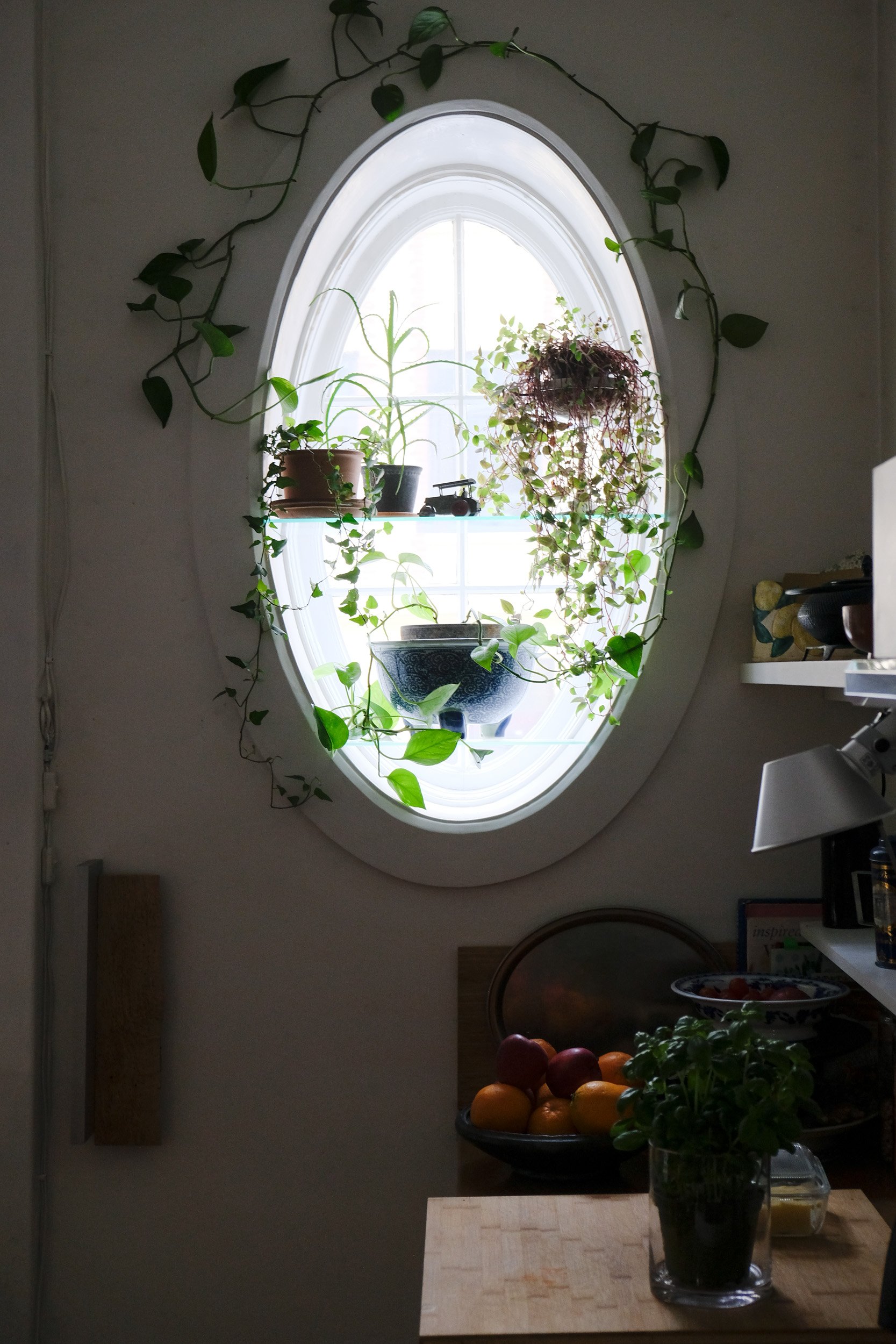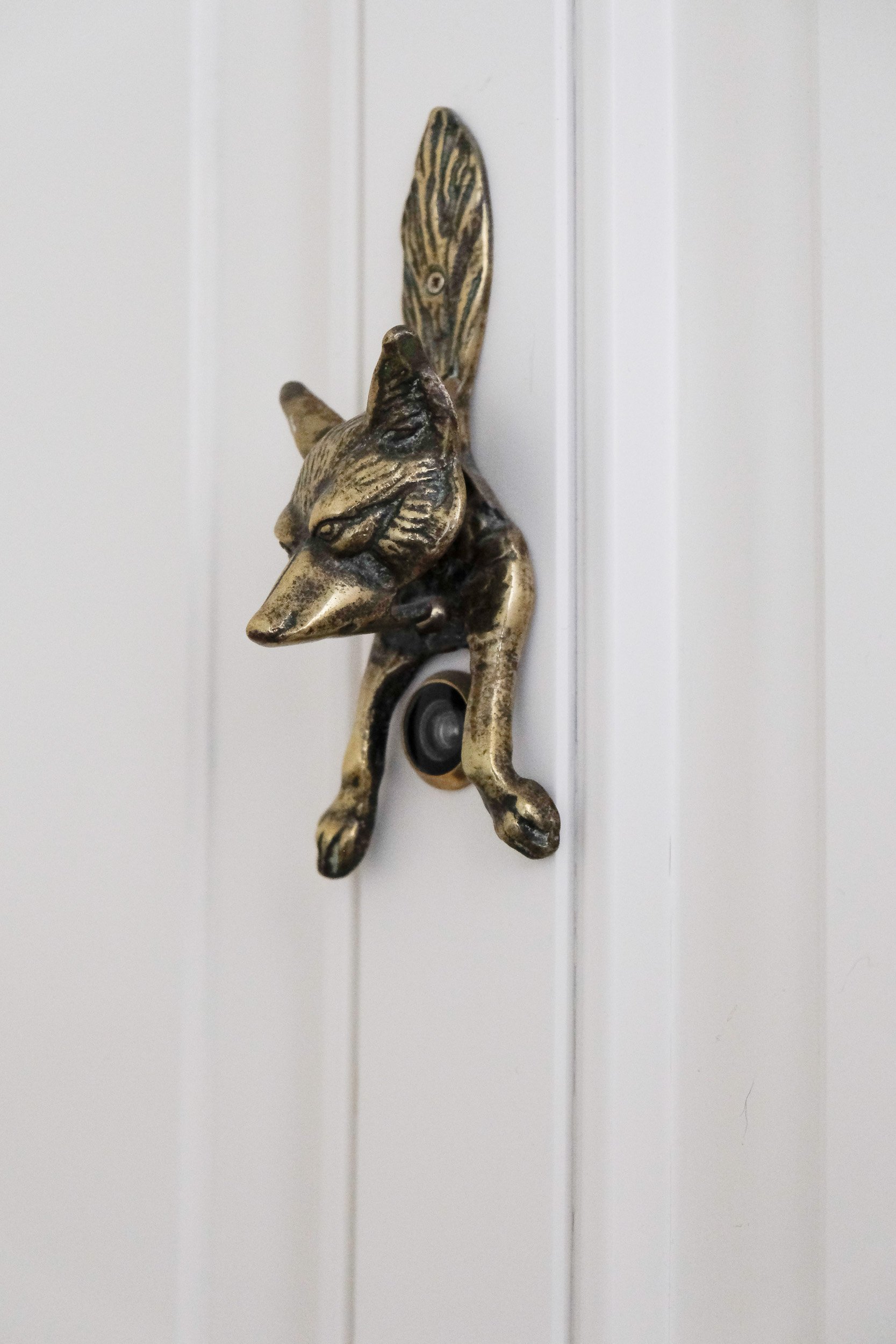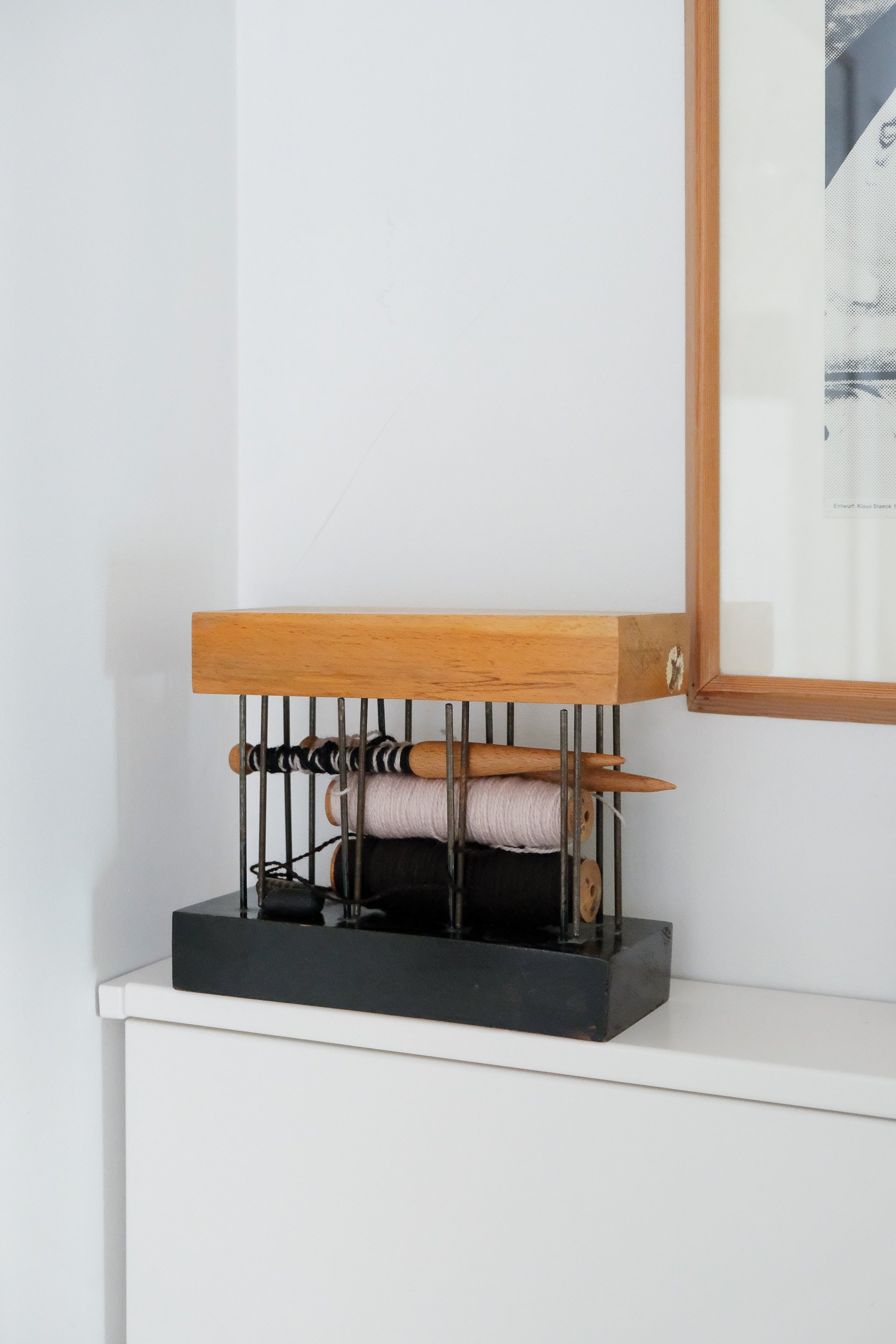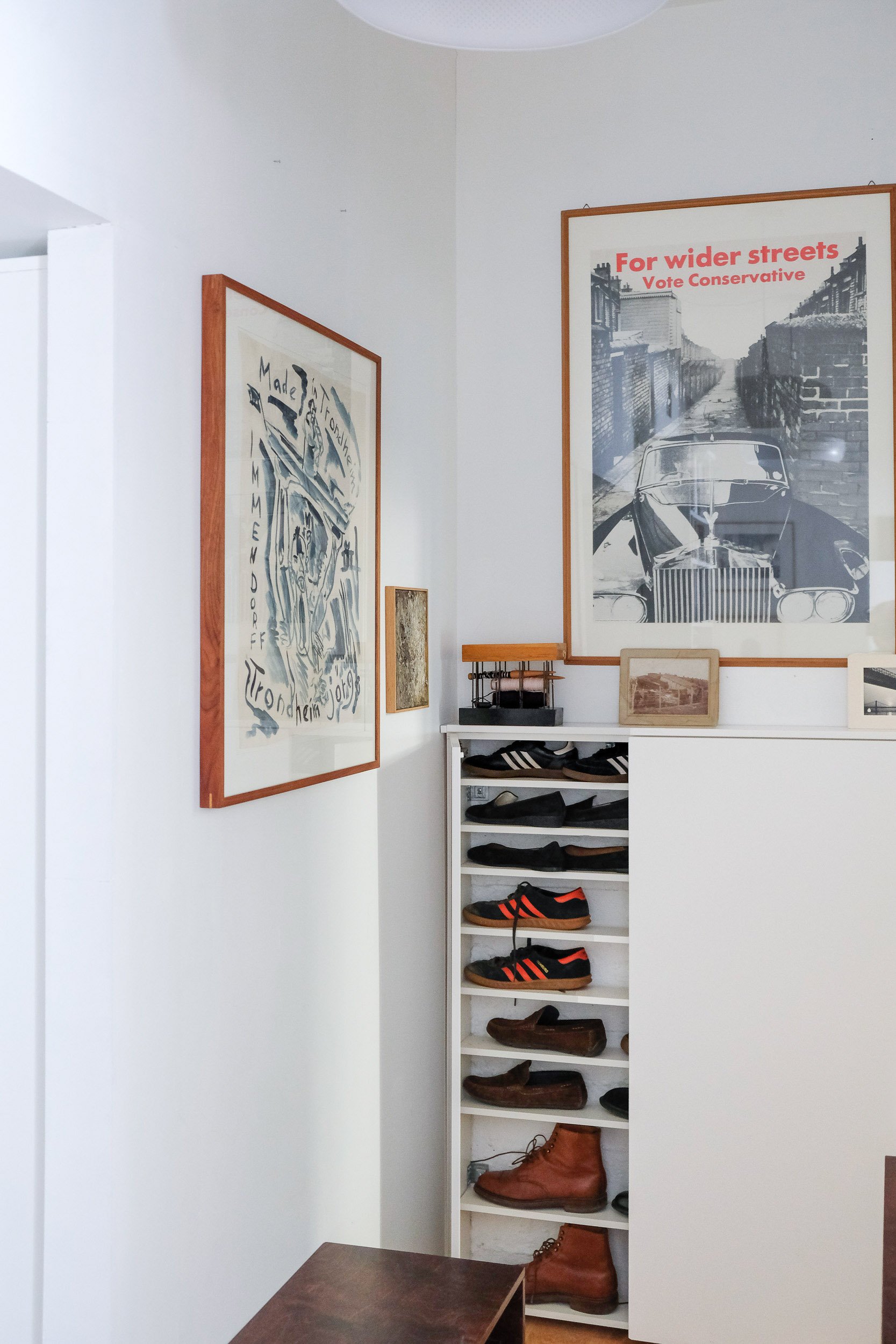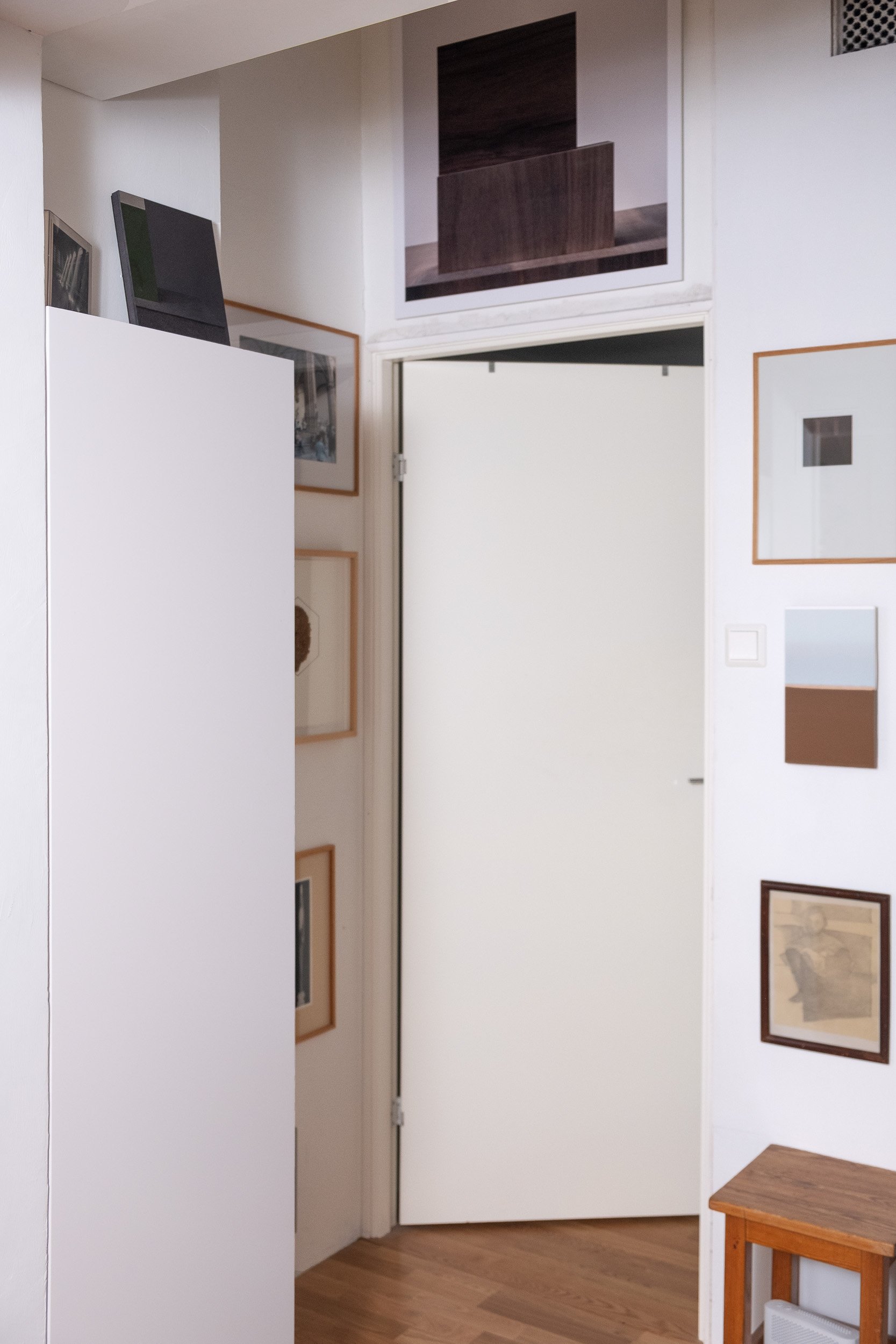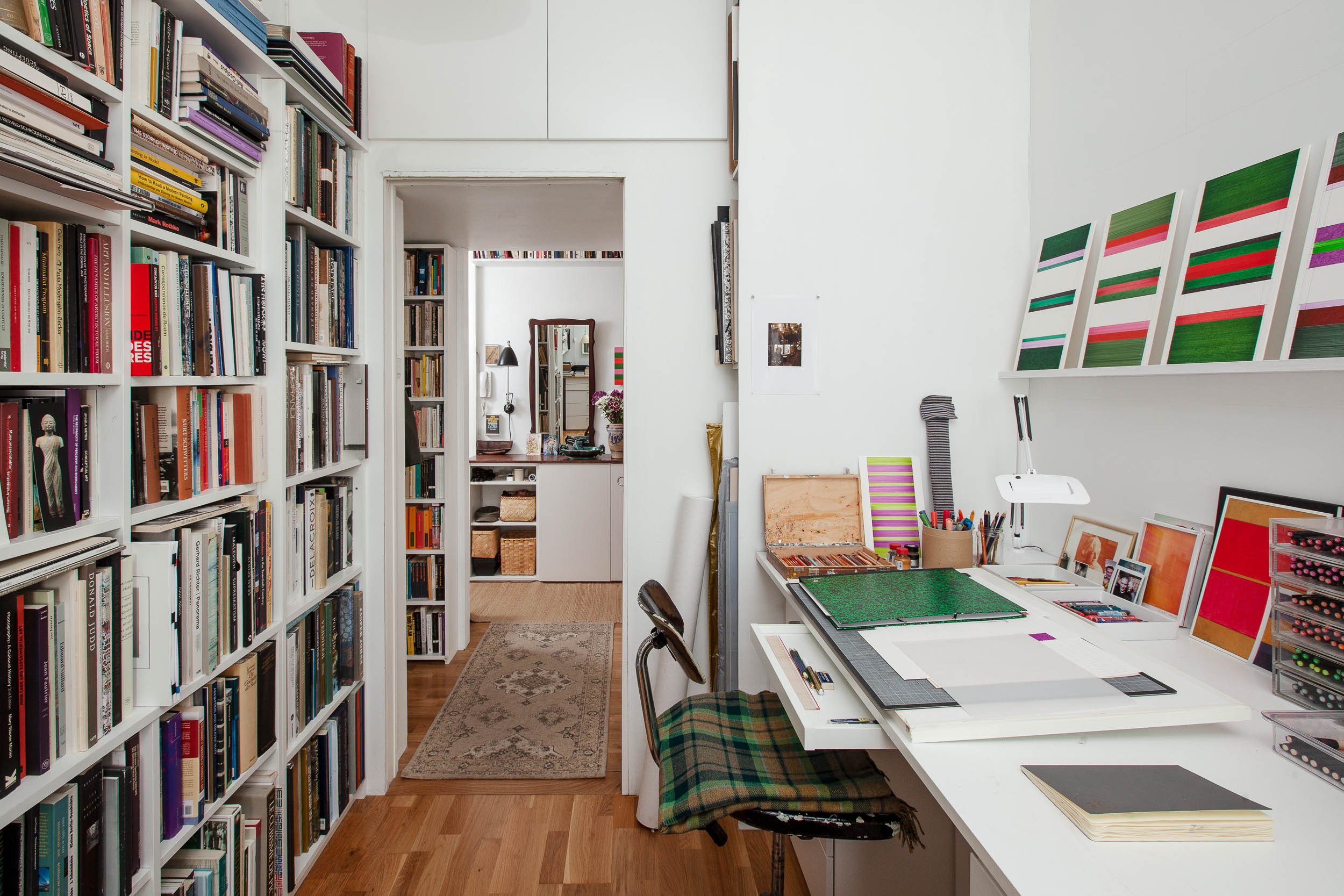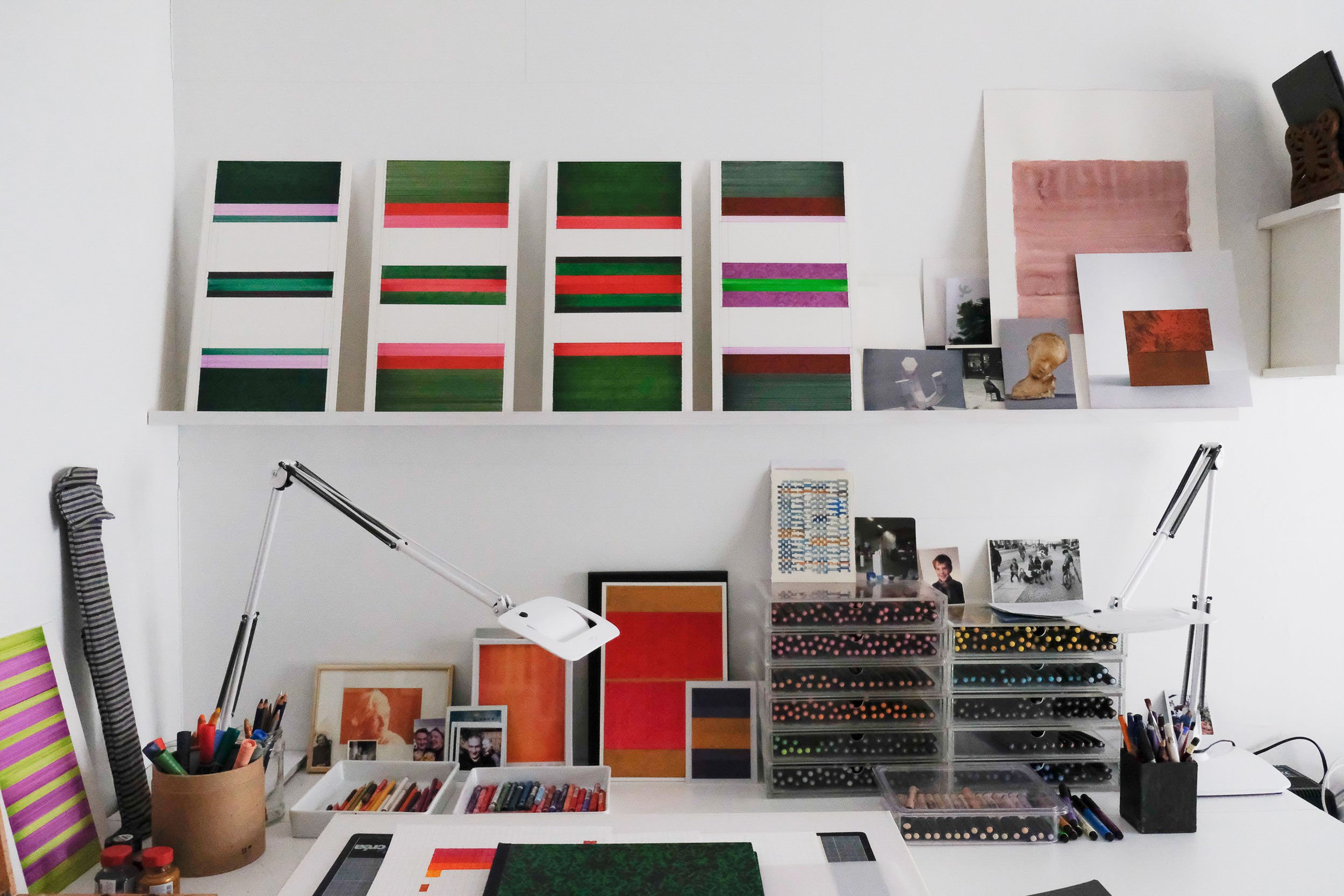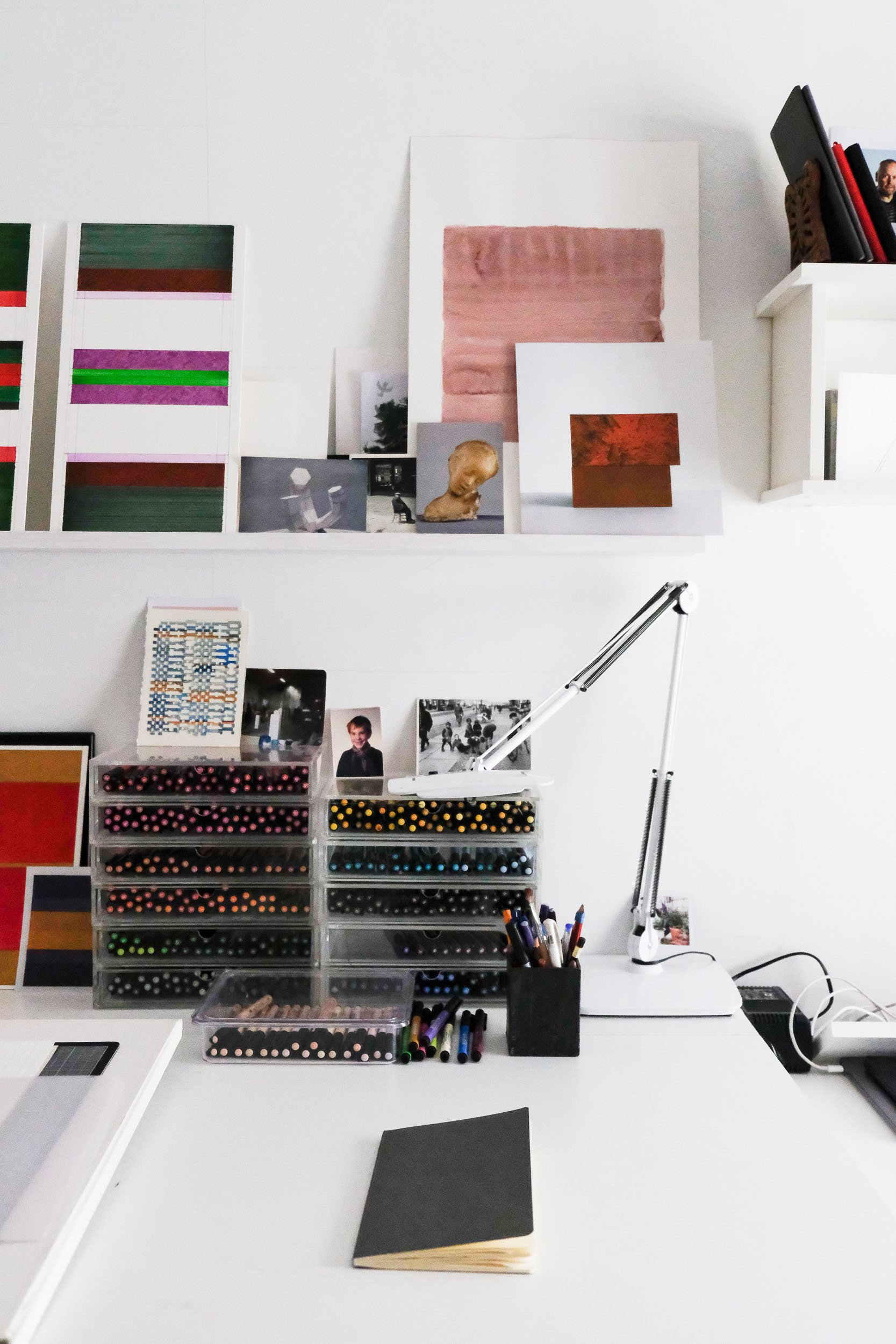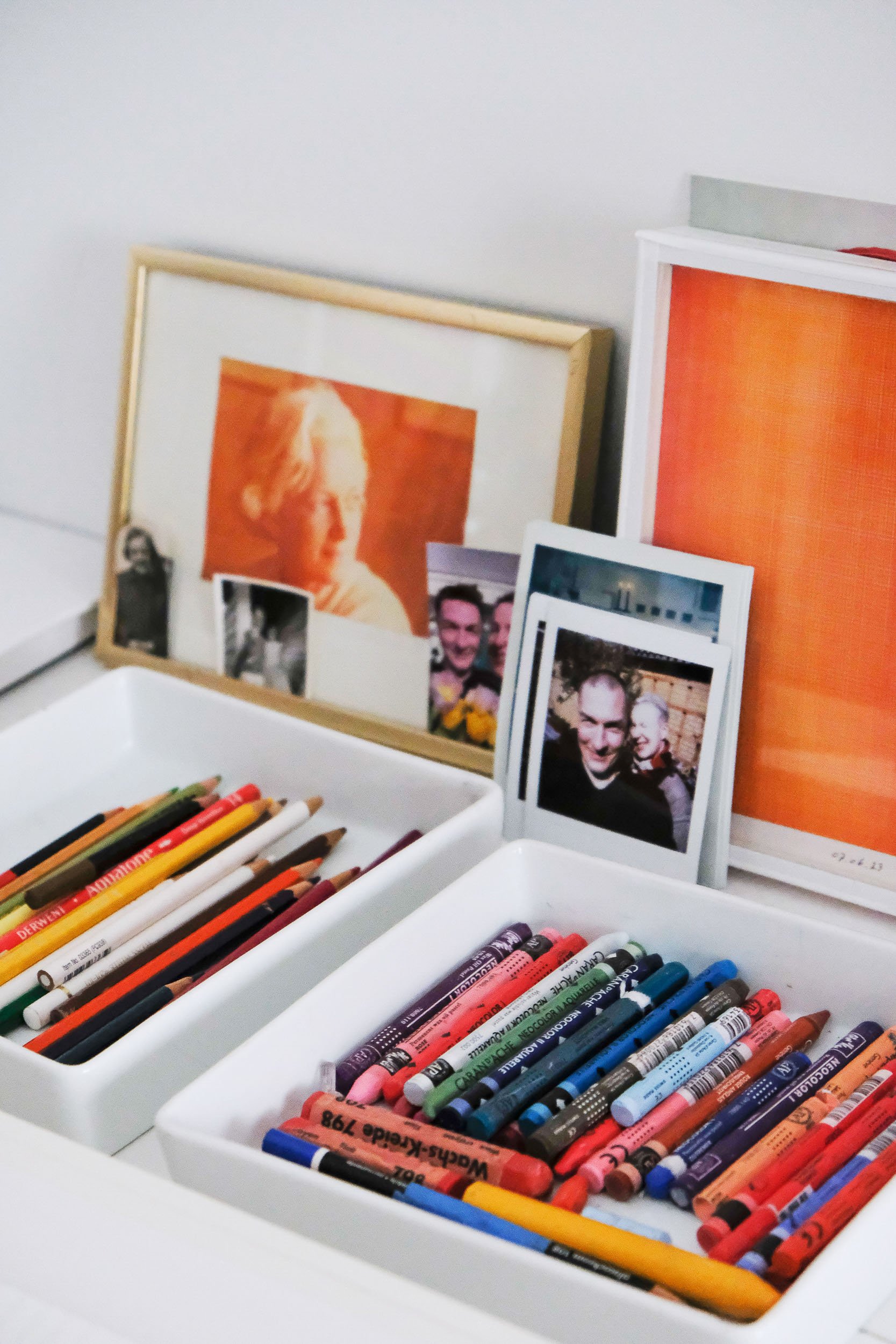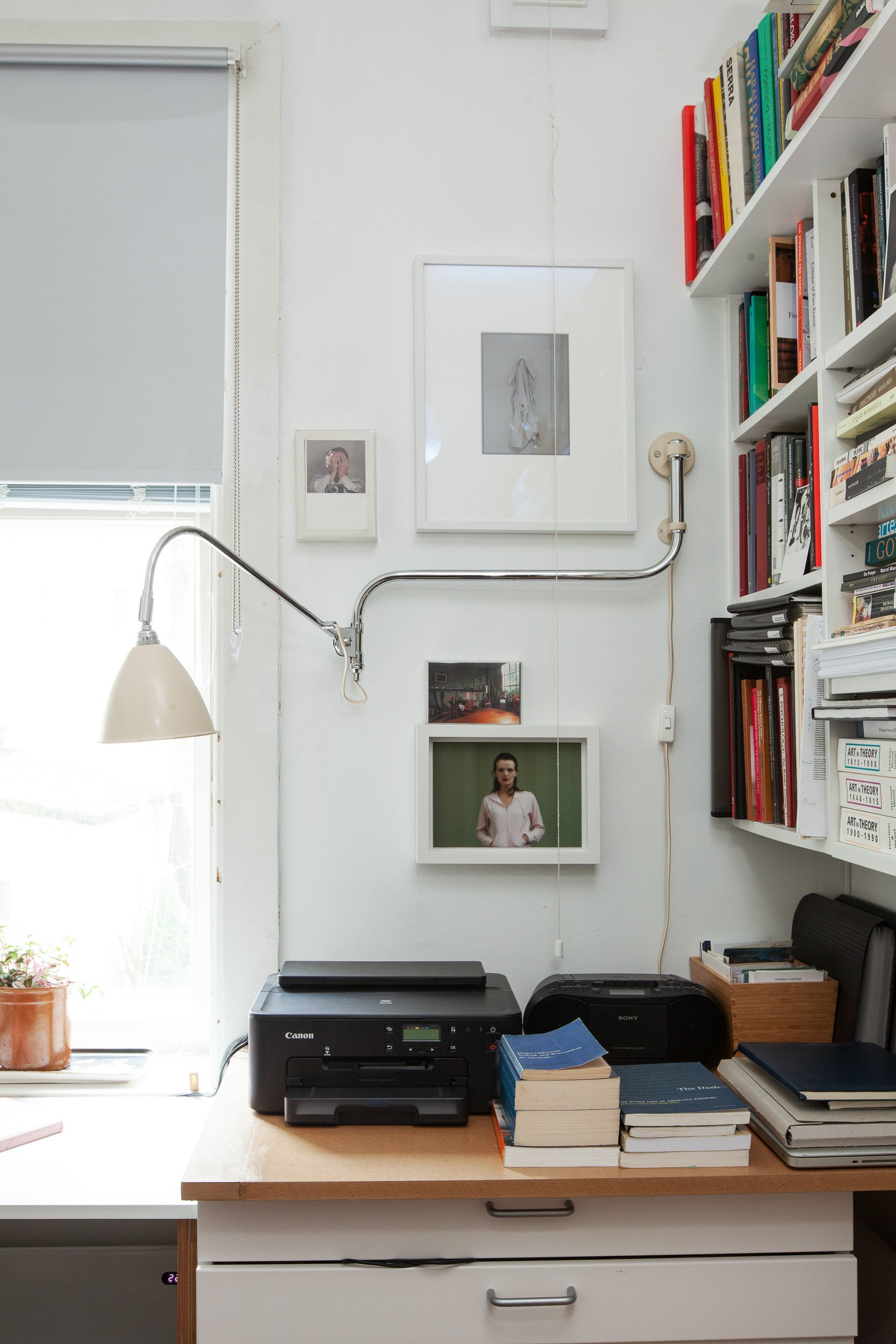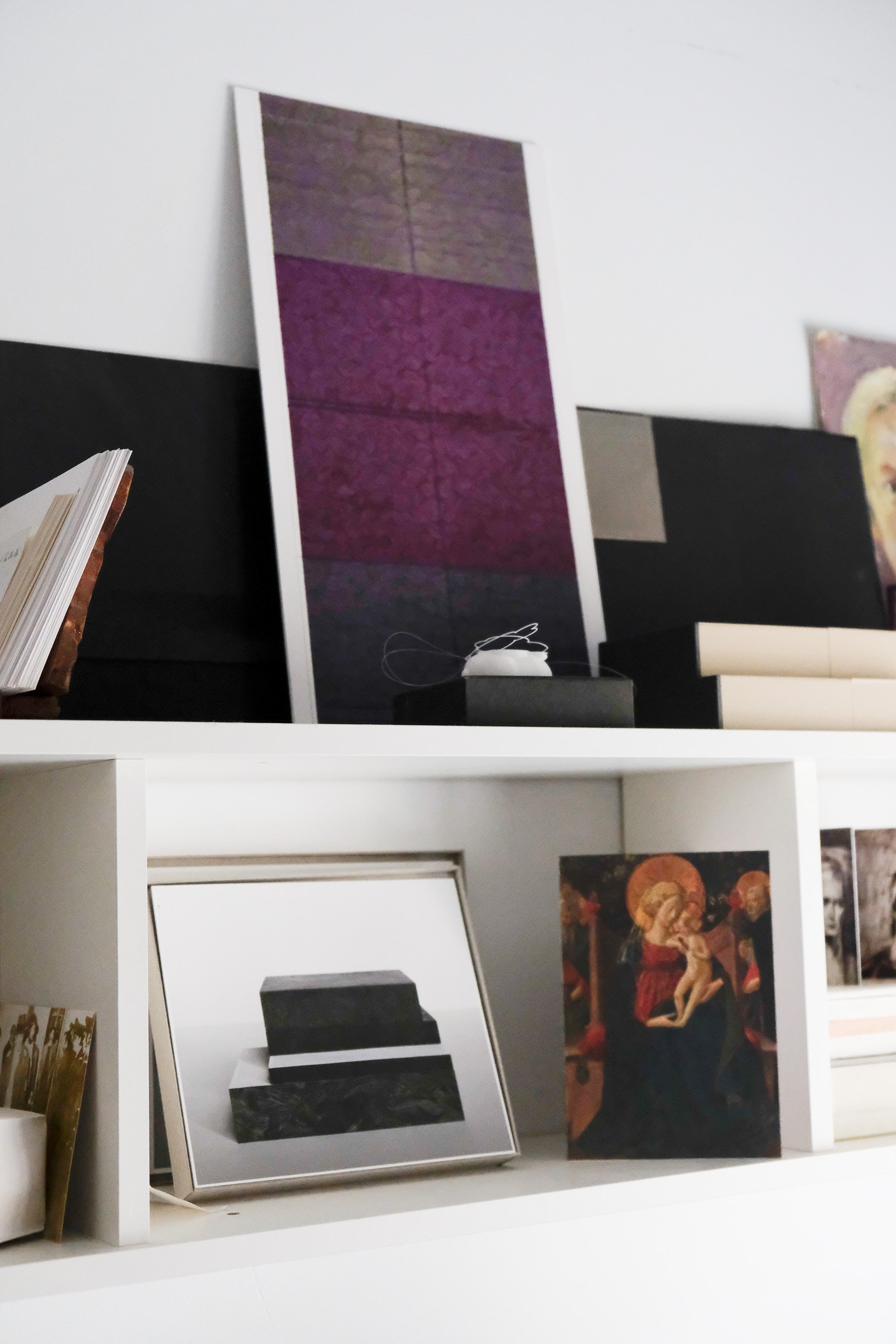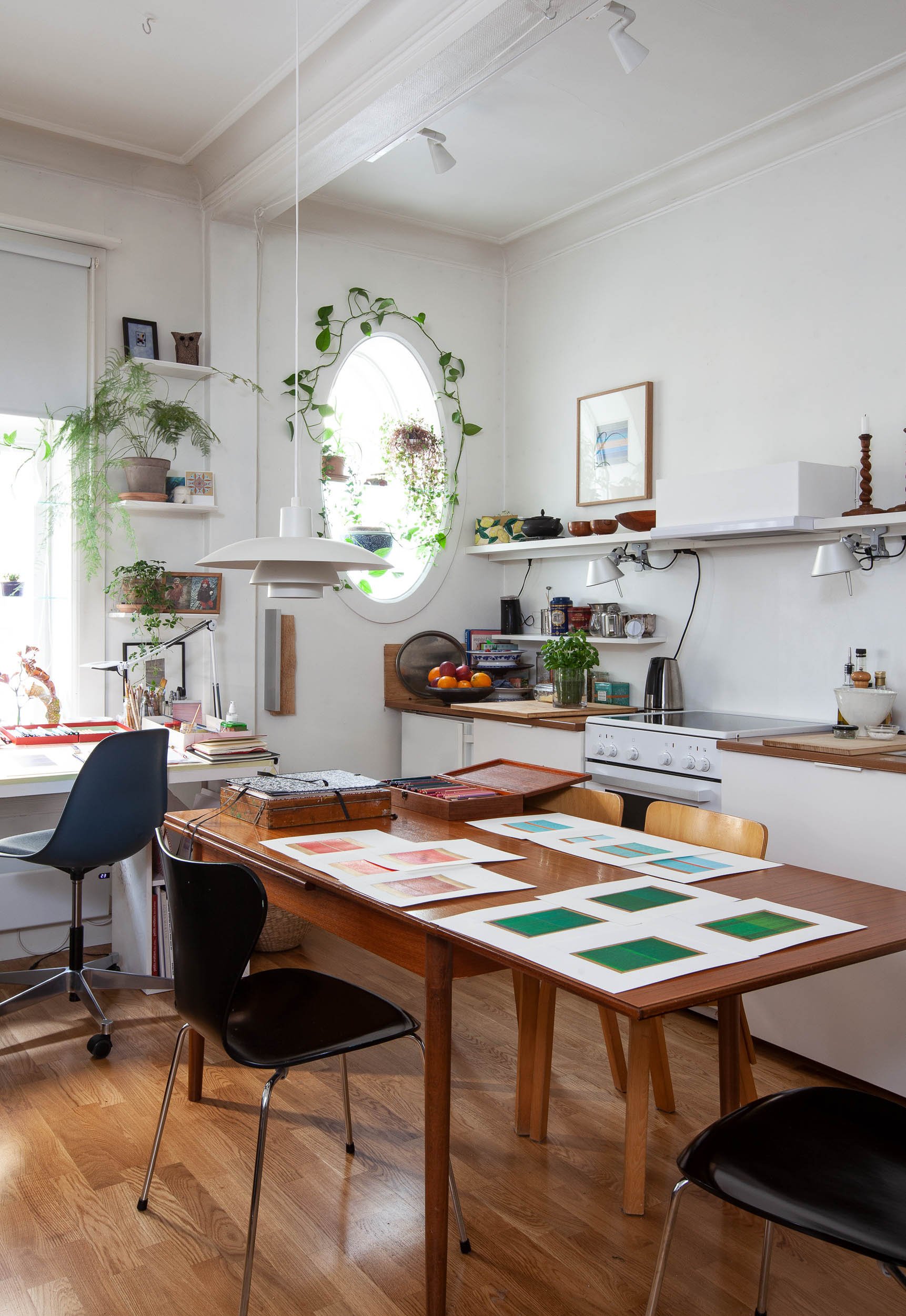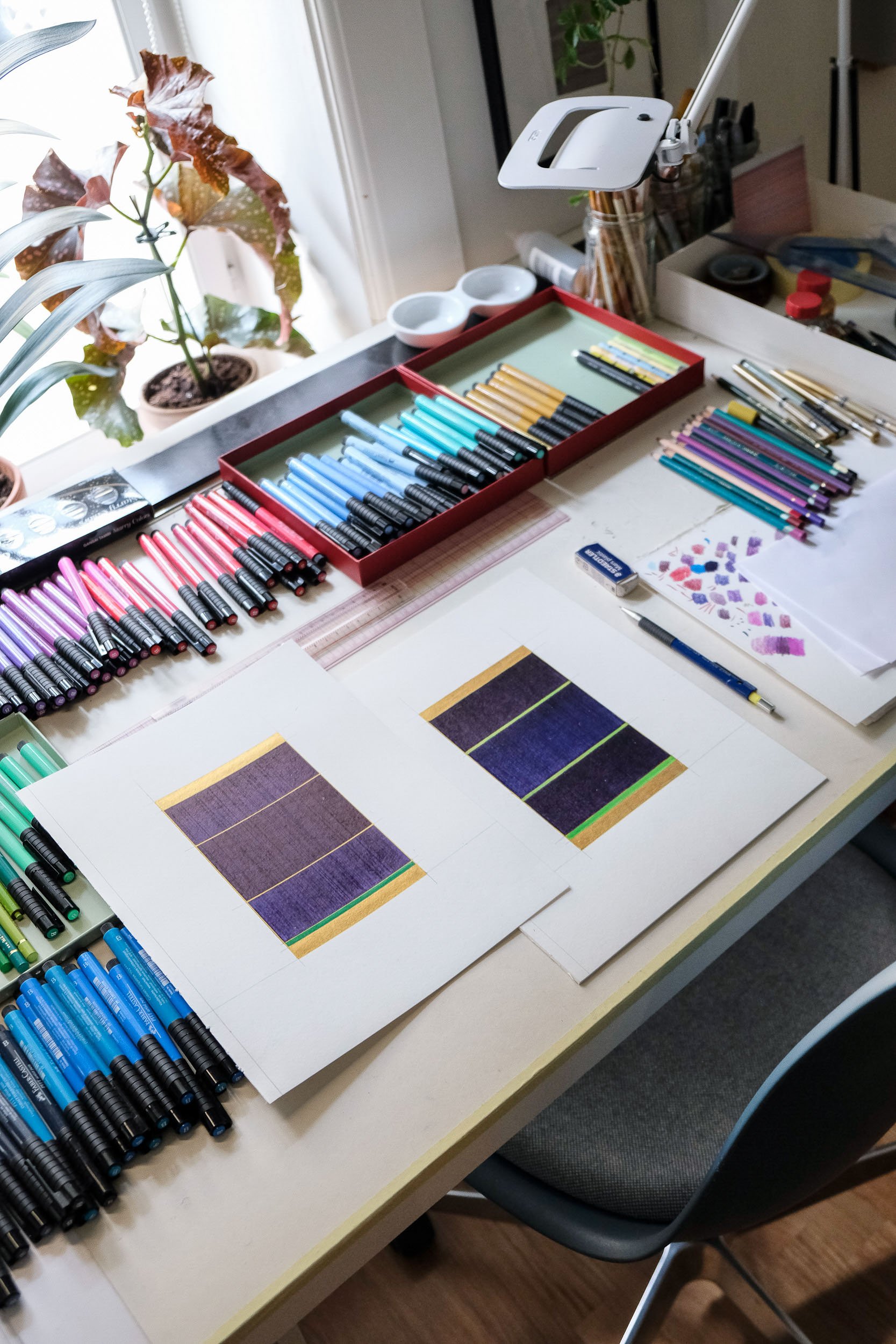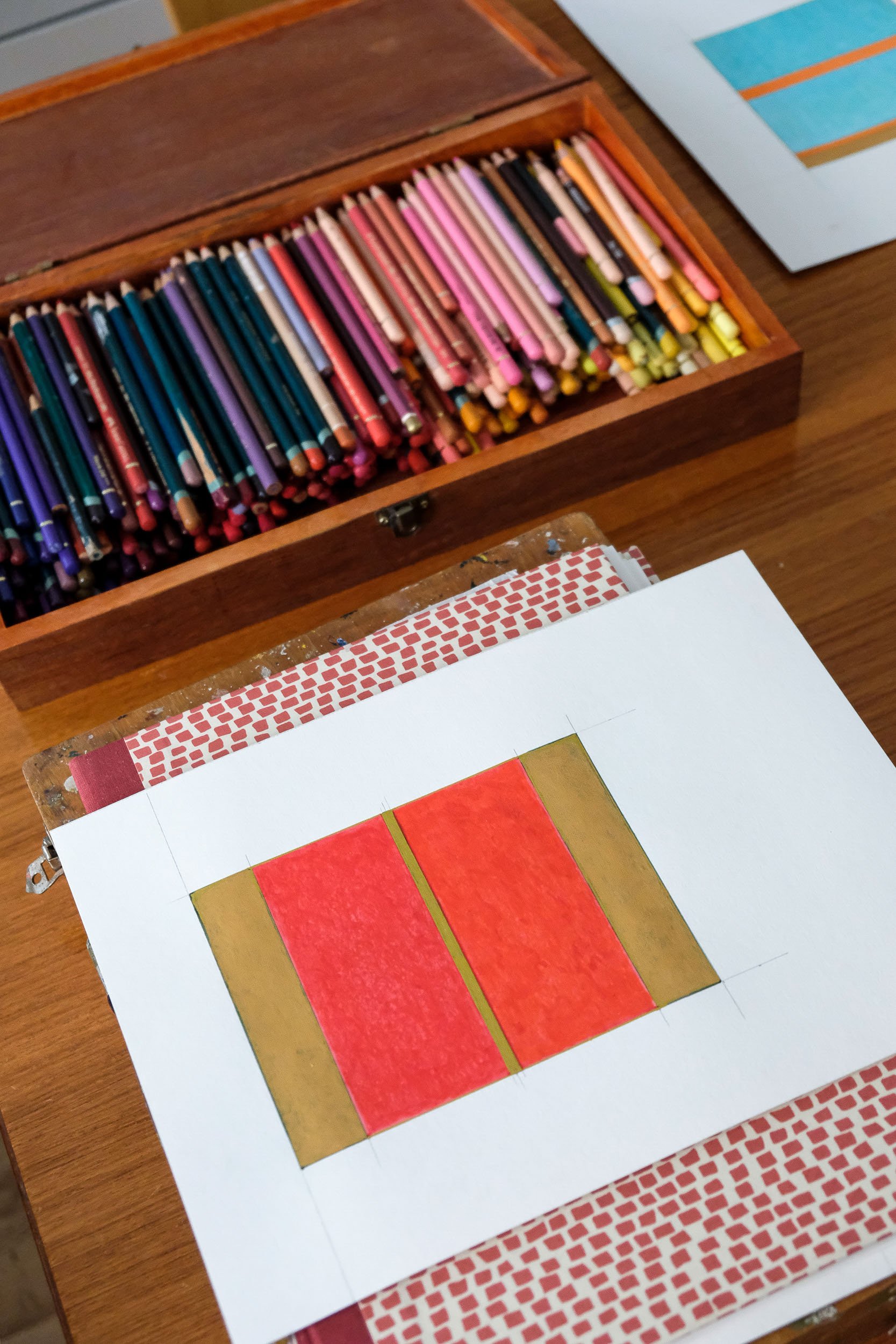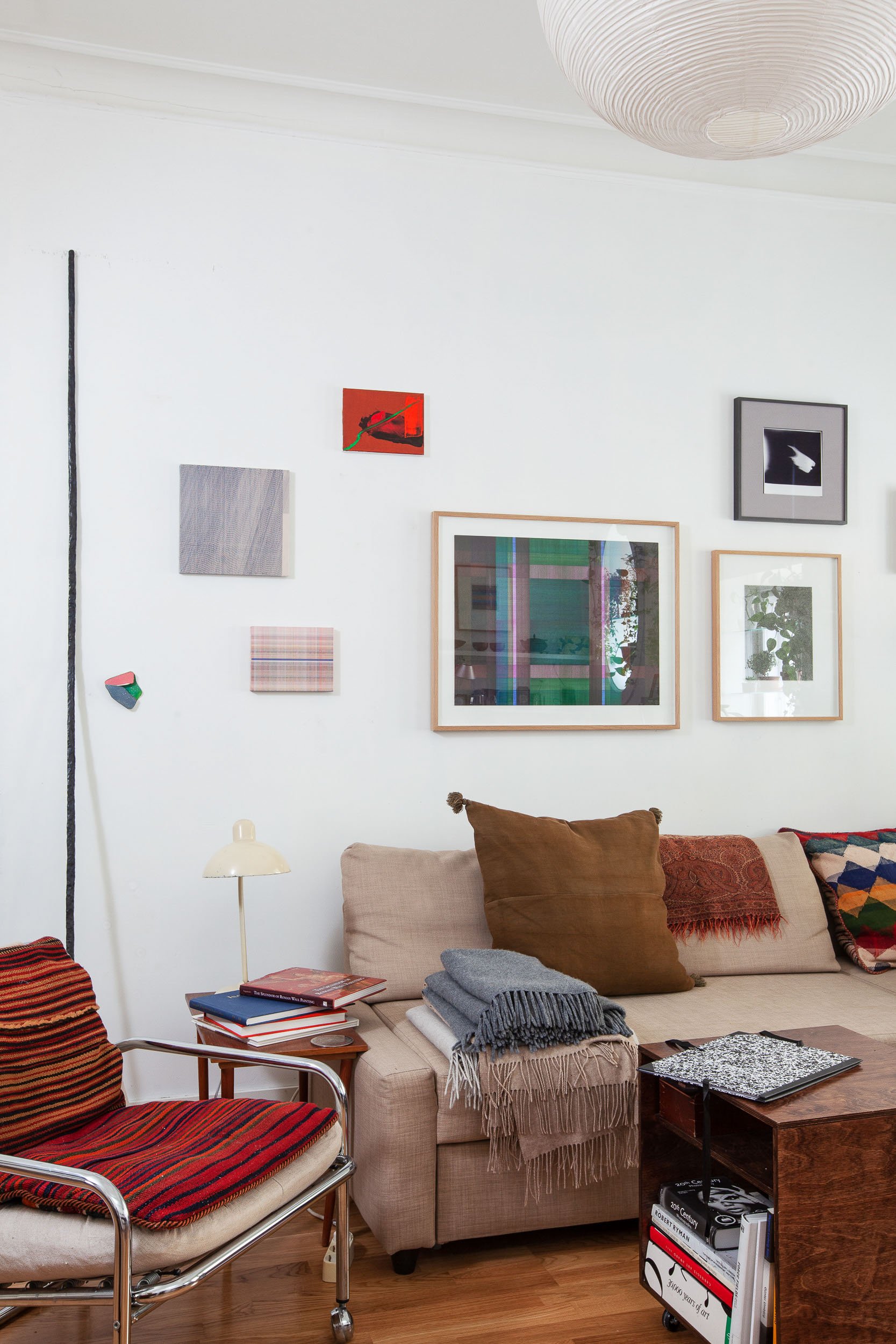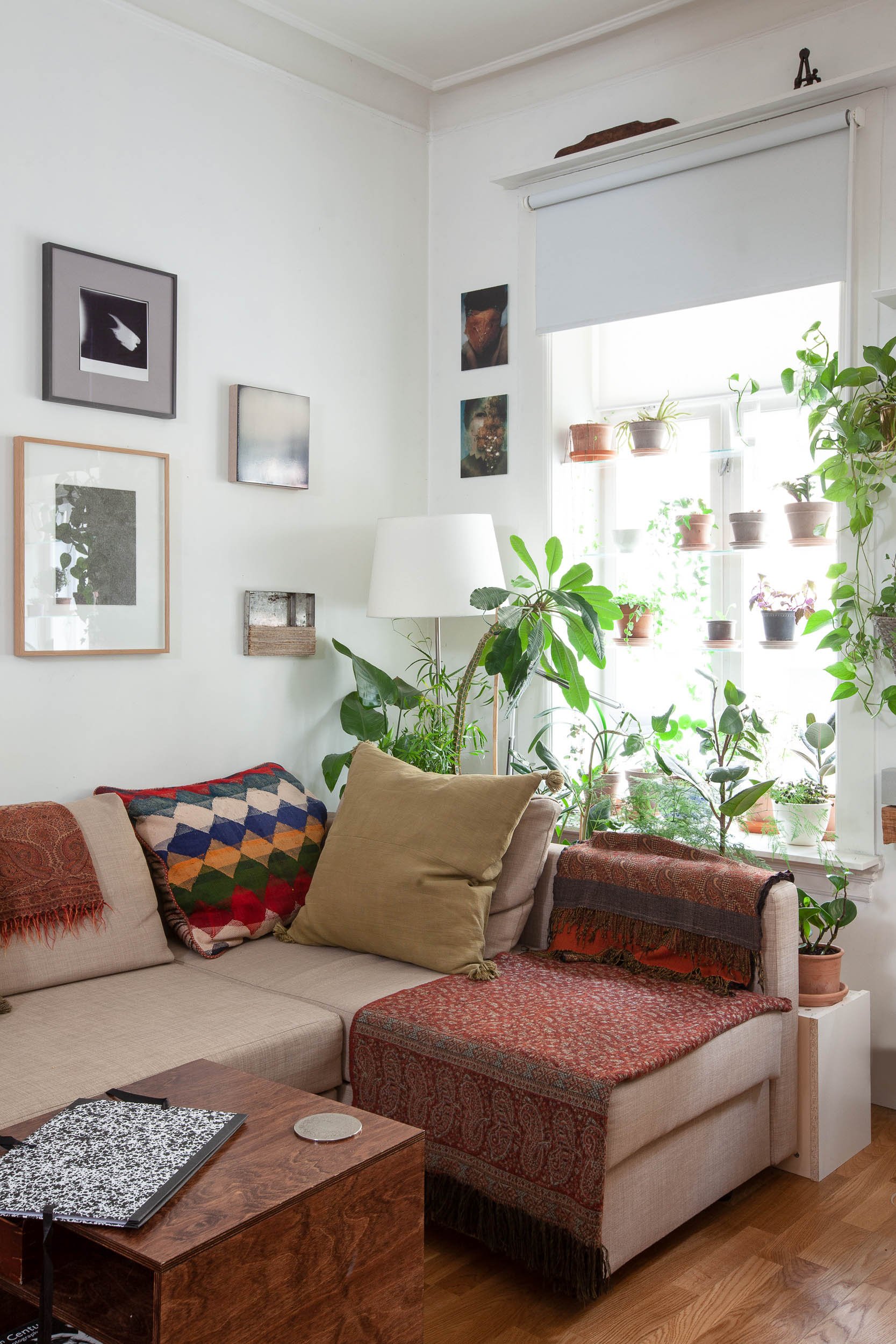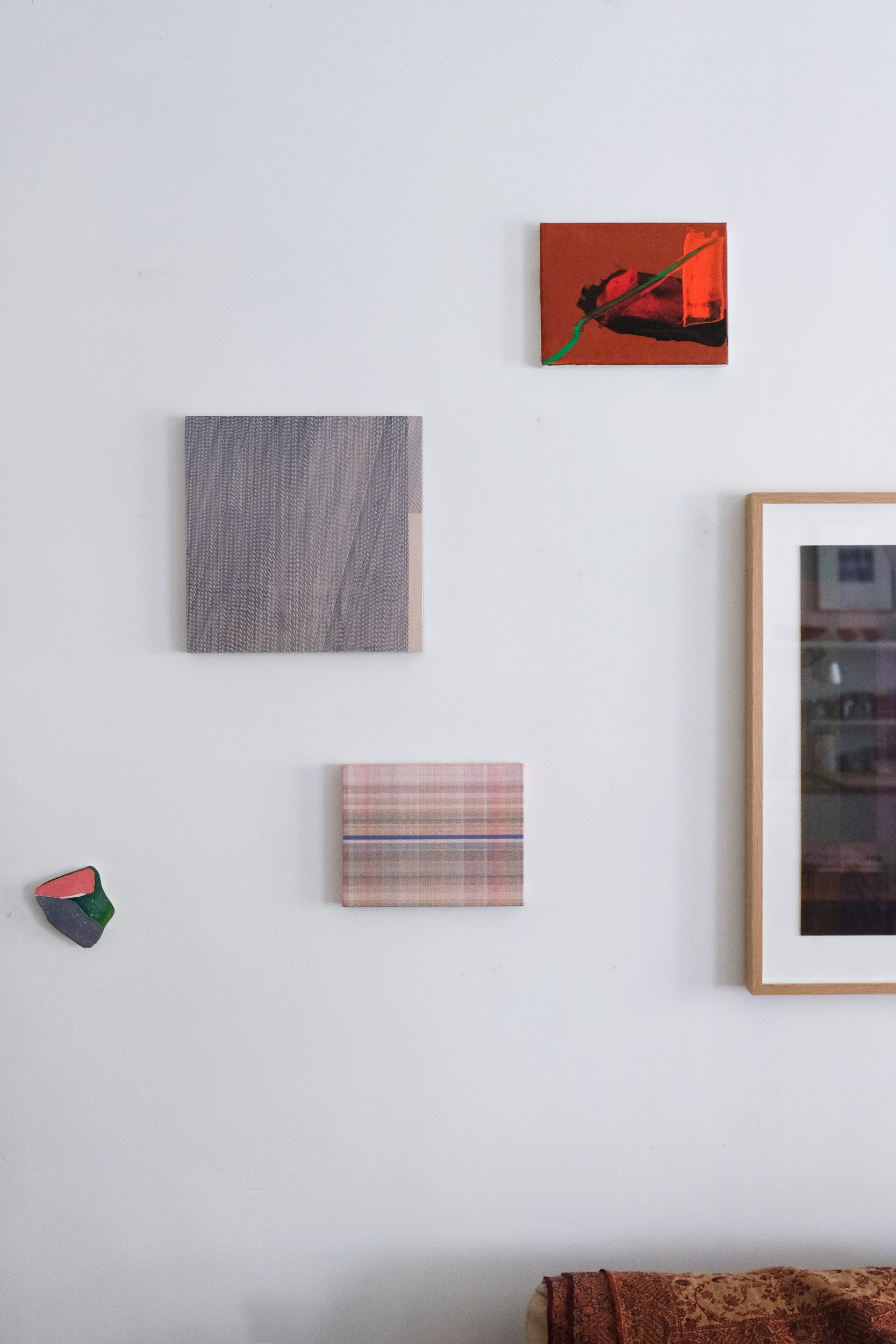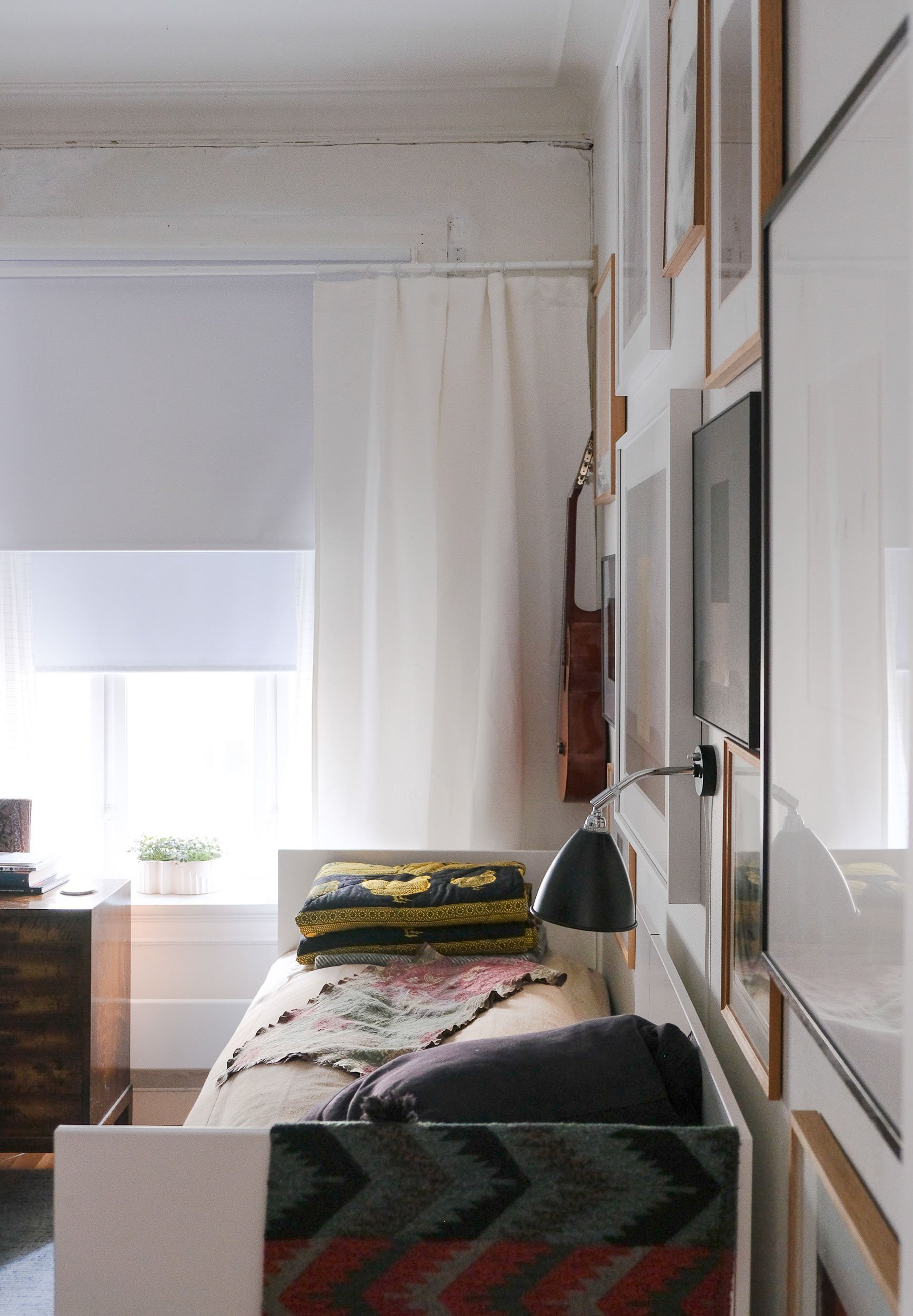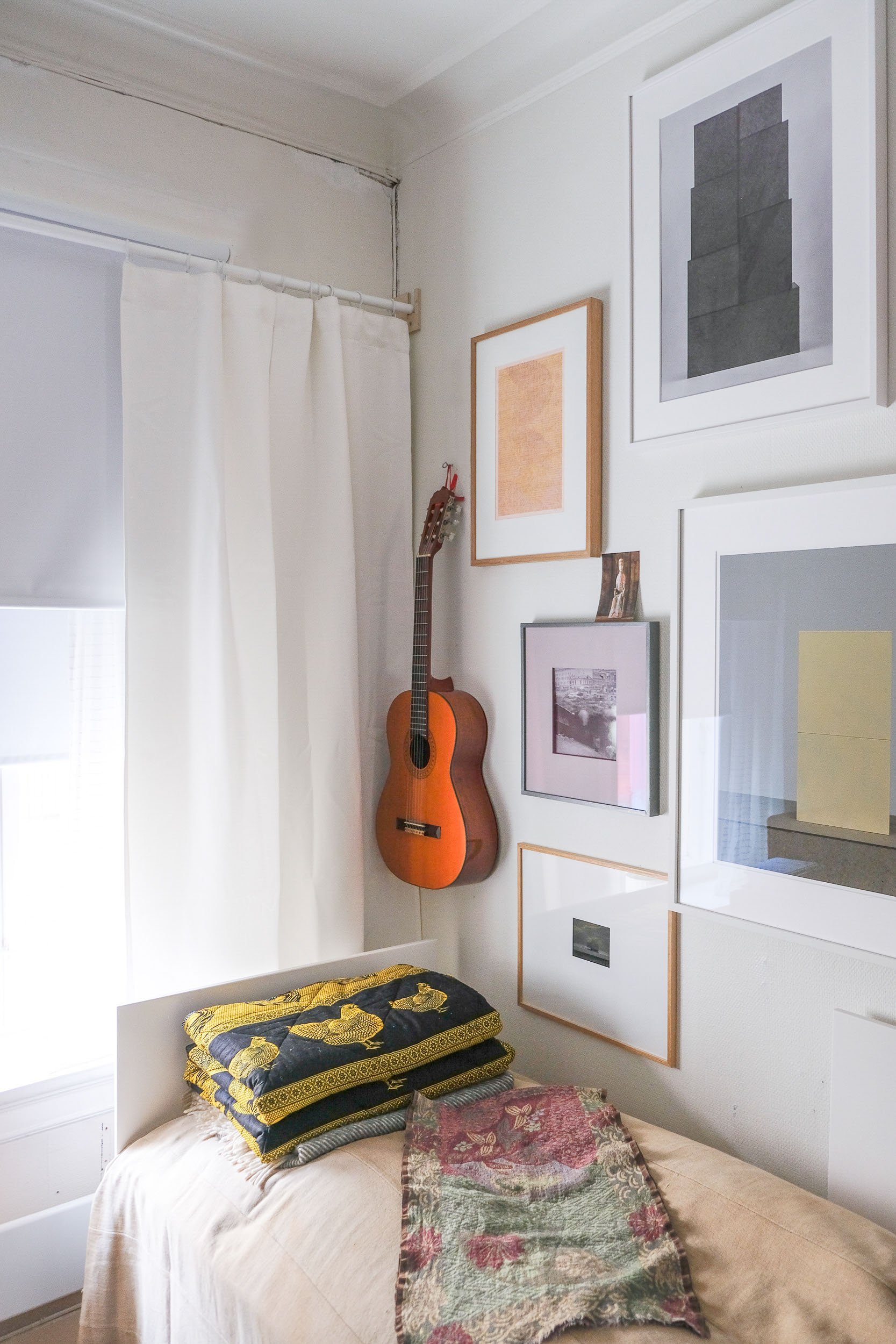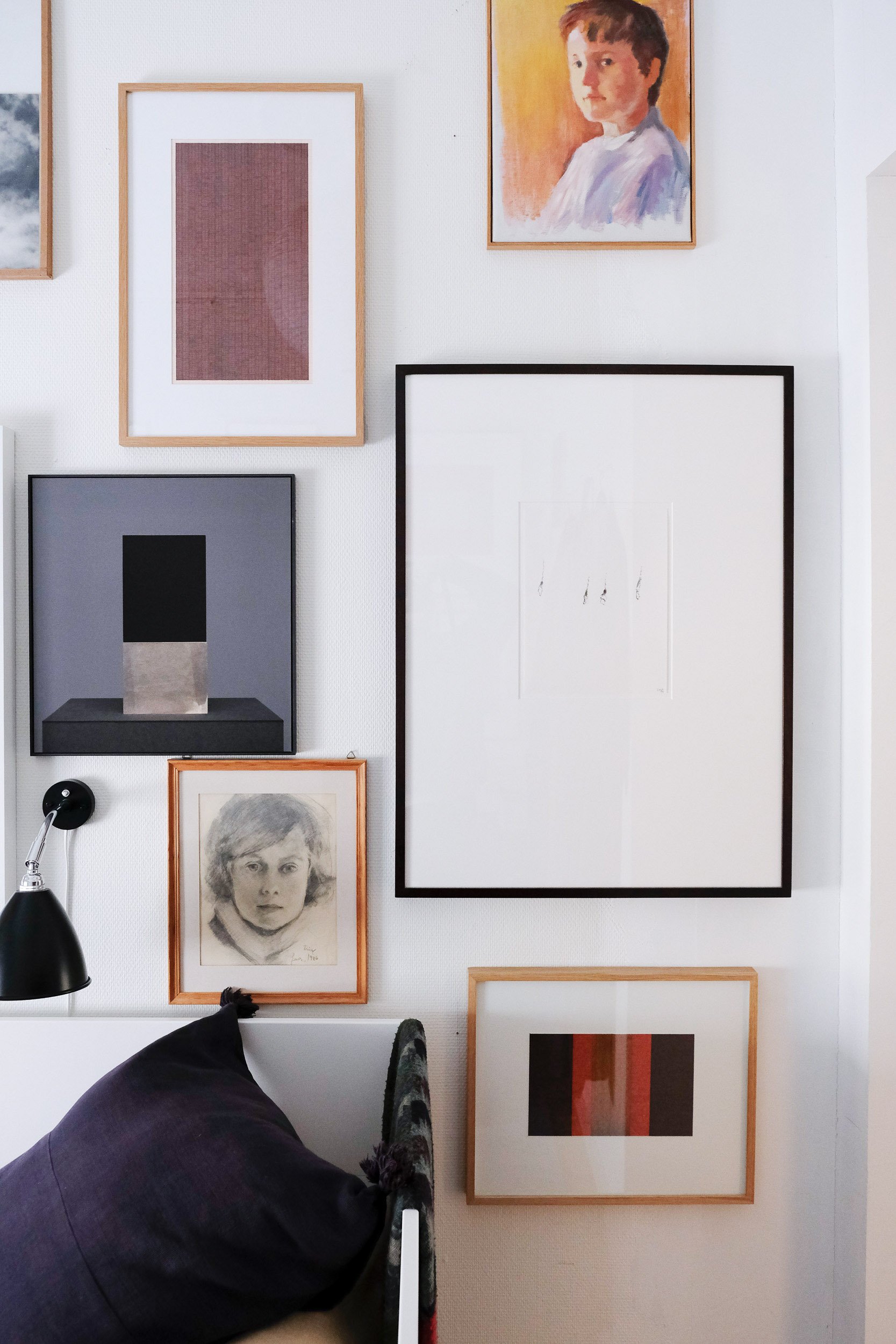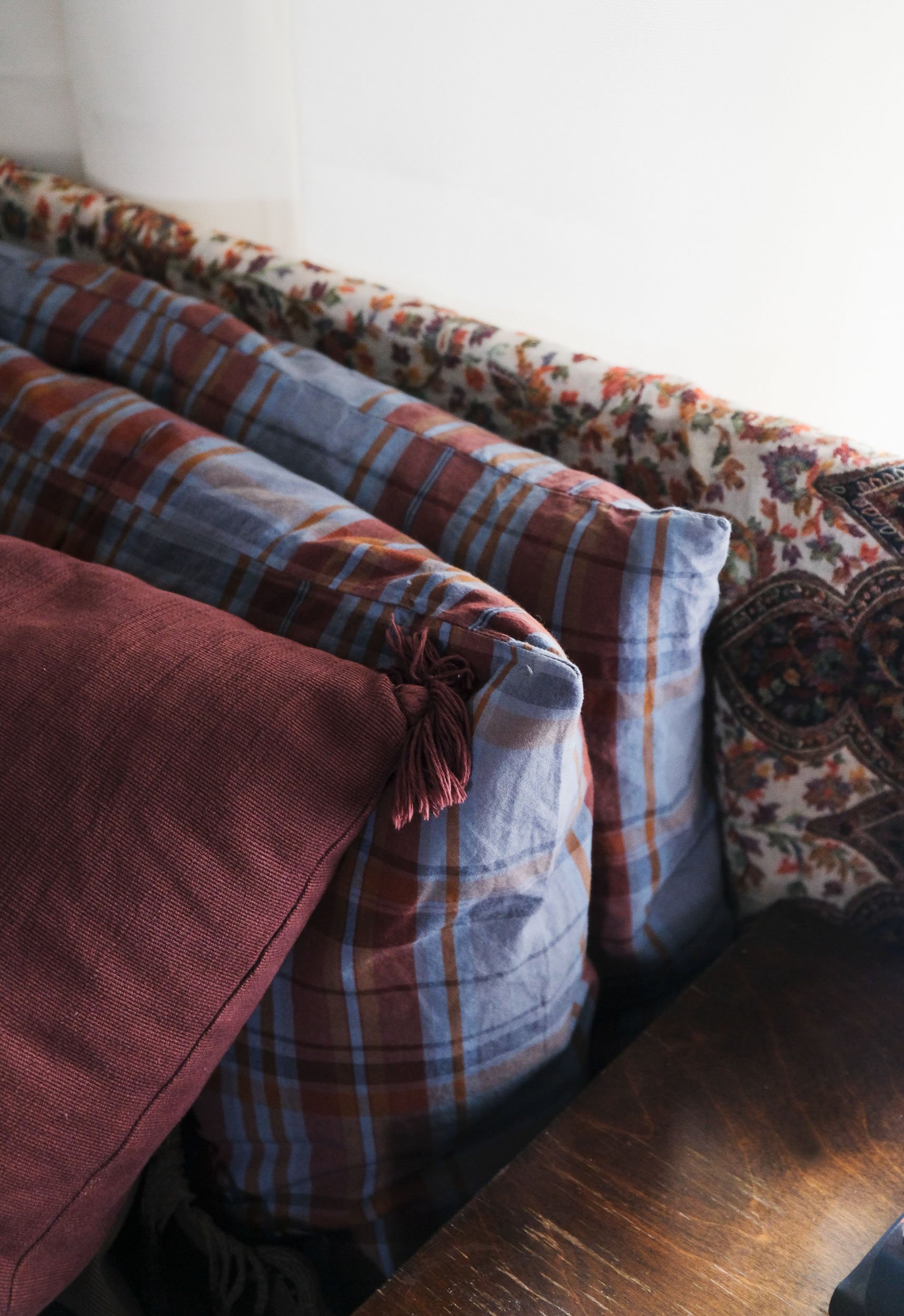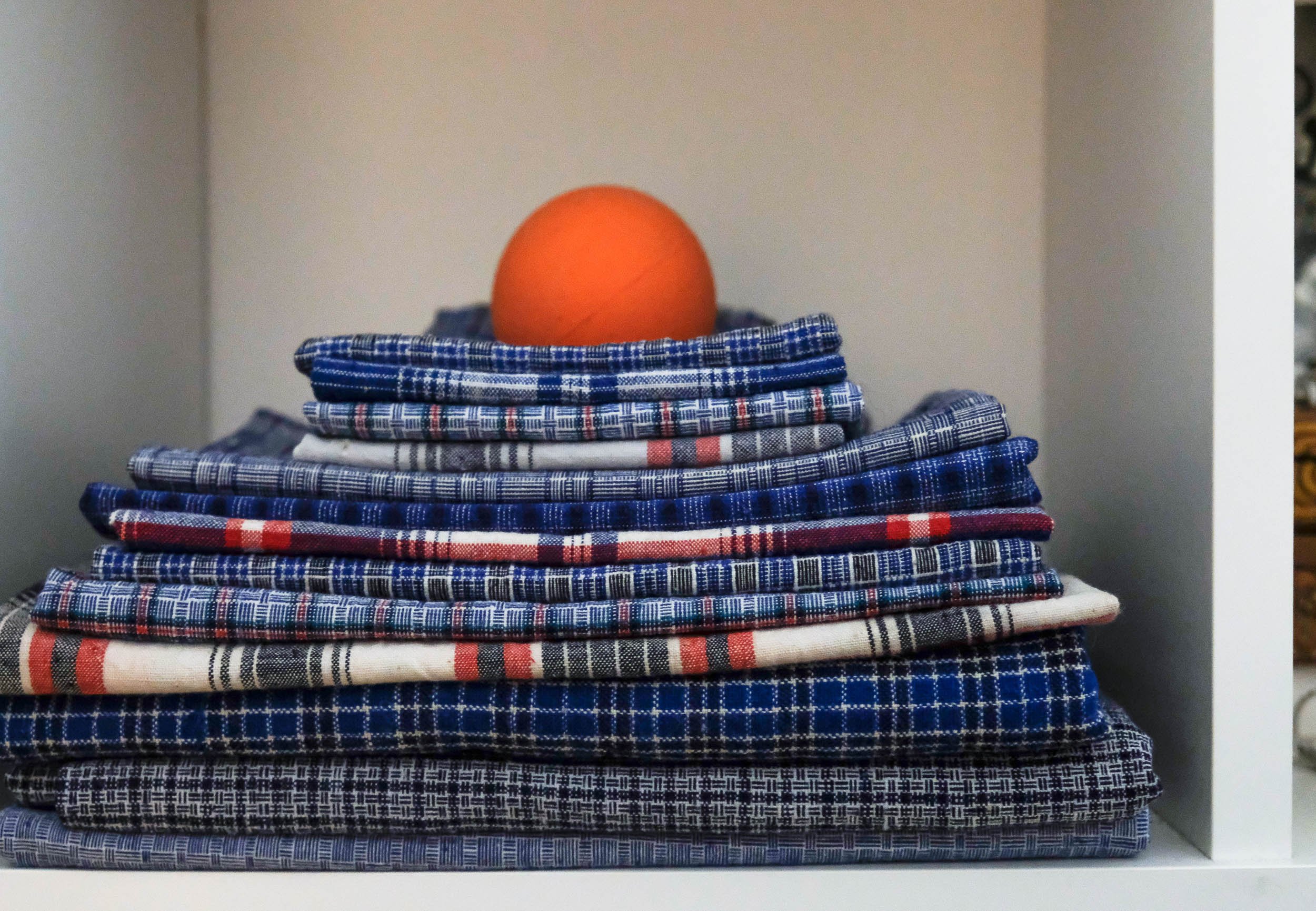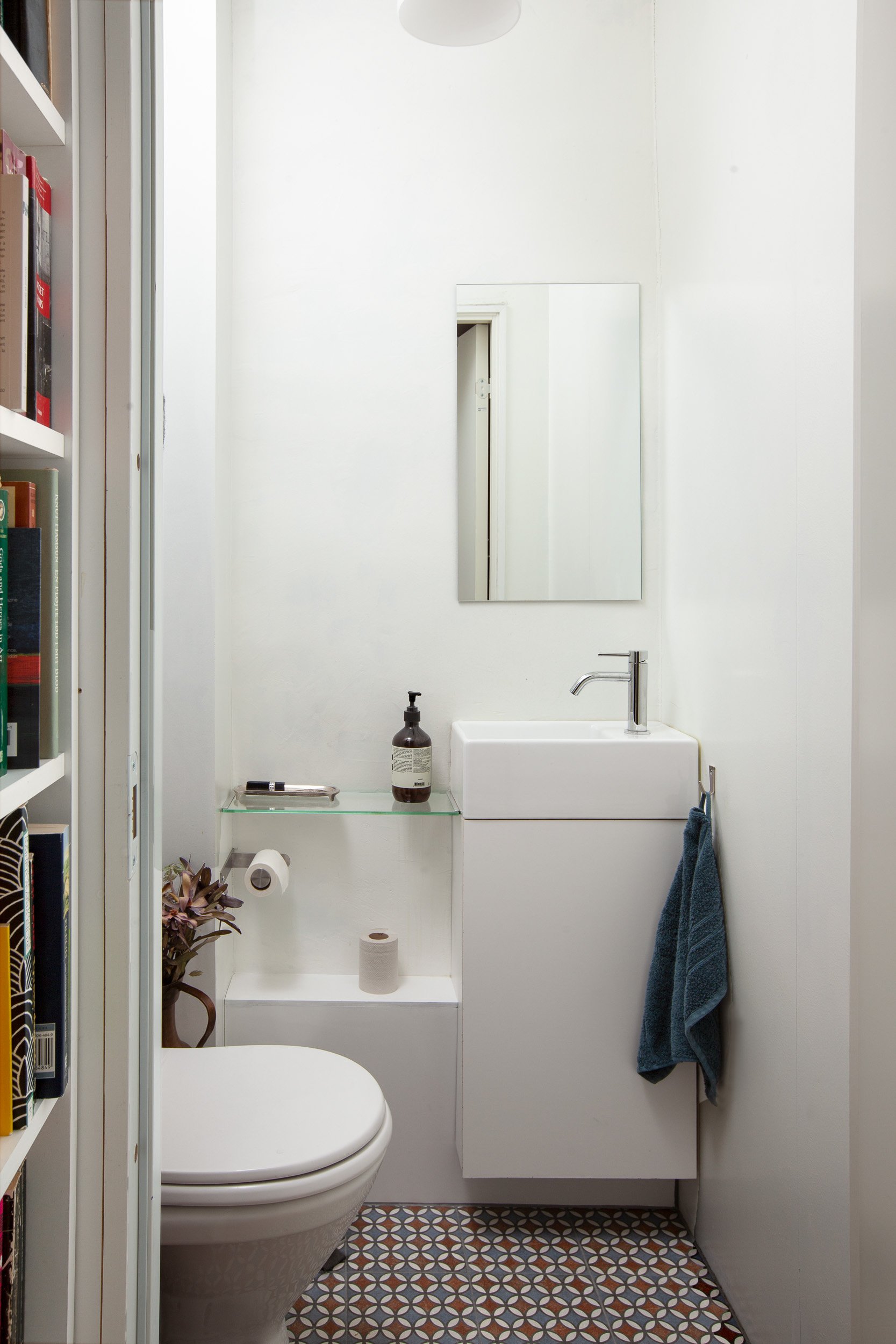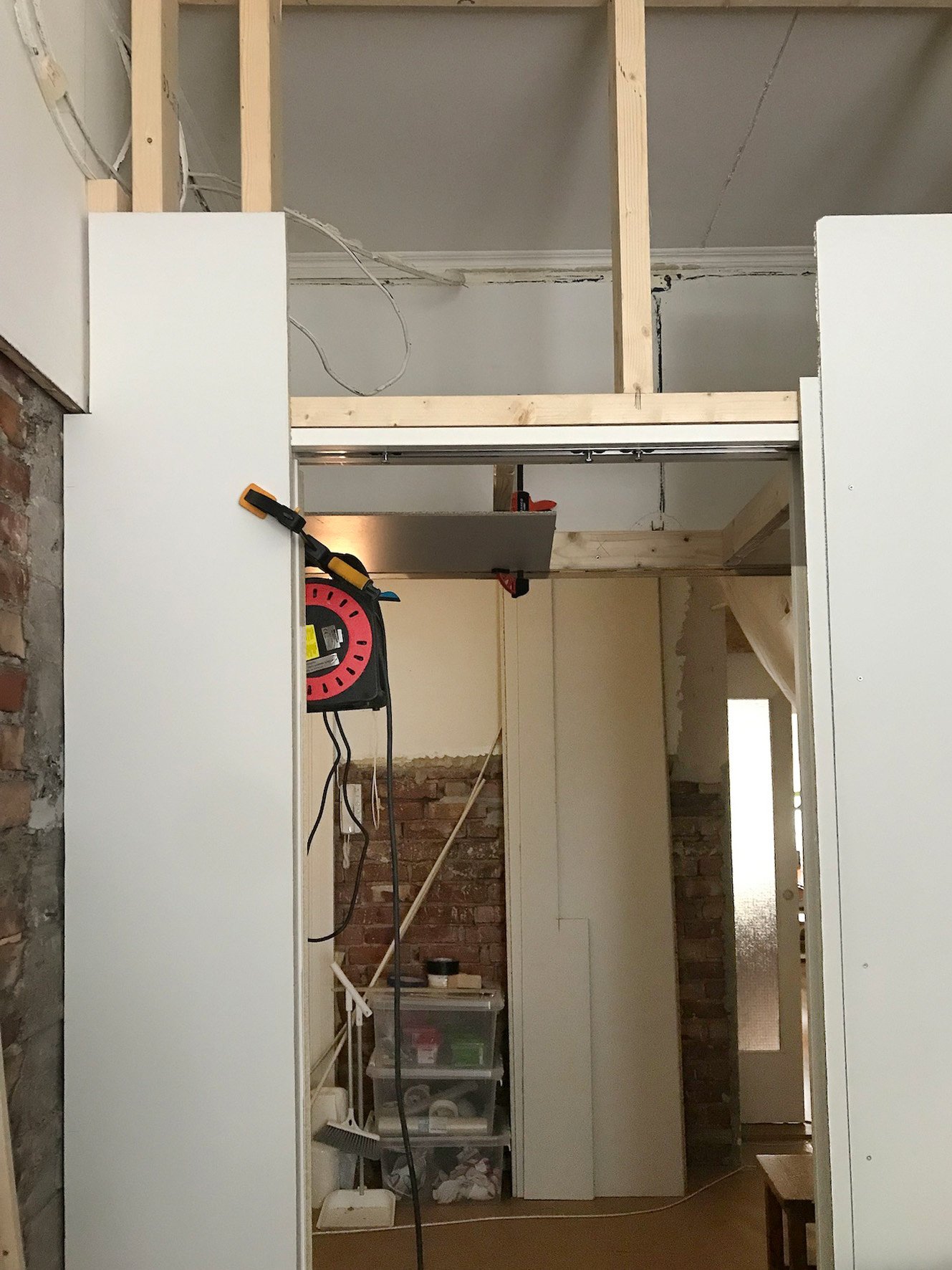A frame for life
A Frame for Life
- The Oval window….oh yes... a boat maybe…a journey, or even a romance. There’s something about looking in and looking out from there. Secretive perhaps.
A focal point
Heidi is thinking out loud, smiling and gesturing, as I freely associate;
a view within a view, a looking glass, or a Victorian frame- as in a passe partout?
Heidi S. Kennedy continues:
-The oval window was the only thing I could really see at the time, when the apartment was advertised. Its shape is a stark contrast to all the squares and rectangles that have now become our space.
A room of one’s own
As I sit down in my own room to write this text, mundane thoughts about ‘A window on to the world’ present themselves. But really I think about art as an expansive enterprise, as the window that broadens our minds and allows us to see, I mean really see, by truly looking physically at things and situations you might otherwise avoid. I could go on, but, suffice it to say, Heidi is an artist. She lives with her husband Stein Rønning, also an artist.
The couple have moved around a lot. Their relocations have most often been dictated by their studies (Trondheim, Bergen, Oslo), numerous artists residencies (Paris, Rome, London) or whatever school Stein has been lecturing at. However, this time around, (and at their final stop as Stein describes it),- it was the aforementioned oval window that made them decide to buy the place and call it home. Its wavy antiquated glass and the fact that it faced west, convinced them of moving westward rather than east in Oslo, as had been their original plan. It was a ground floor apartment, but higher up than most others, and because they had recently let go of their old and much cherished Land Rover, it was important that the apartment was within walking distance of both pleasurable sites like the Vigeland Park, shops with fresh food and flowers, and on the practical side, public transport.
No quick fix
The apartment became theirs in 2019, and they knew there was no ‘quick fix’. The original floor plan was laid out for people who use the space outside of working hours…to sleep and eat and watch TV, a place to keep their clothes and gear..
-To us, and particularly for me, work is where we live. This demanded that we made some structural changes in order to meet our needs. It goes without saying that we do all the work ourselves. Always. So this is a slow and ongoing organic process.
The origami way
Upon arrival on my first visit, and without even a second to make use of the ‘fox-knock’ on the door, I was greeted warmly by Heidi’s long arms and an up-beat ‘trøndersk’ dialect. I had to focus to take it all in. Before the door had closed behind me, works by Jörg Immendorf and Jan Groth filled my field of vision and as Heidi led me around from room to room their home unfolded in front of my eyes. This was no ordinary two bedroom design-apartment in Majorstuen complete with perfectly smooth whiteish walls and design classics all sourced from the same shop - but a kind of origami way of creating a home. One space divided into rooms, then several spaces and new opportunities present themselves within those initial rooms, creating microcosms in such a limited amount of square meters. Everything seems situated exactly where it belongs, intrinsically - even the ladder has its own room, as do the shoes, the fridge, the wine glasses and the bread.
And each drawer, cabinet and jar contains only the bare necessities (or so they try), in addition to beautiful objects, works of art and images which have been temporarily stowed away, perhaps forgotten, or under construction, left unfinished. Clearly this is an artist-home. However, not in any way like some painters home and studios that come to mind; think Vanessa Bell & Duncan Grant in Charleston, UK. Instead it’s as if lots of white cubes have been assembled, stacked on top of, or nestled within each other, then carefully filled with modern art, objects and the necessities. Apparently minimalistic, but if you really think about it, not really.
Division of labour
Renovation is a step by step process. ‘We need more storage!’ says one, and then the other responds with constructing a storage loft right under the ceiling above the door in the studio, or adds a pantry to the all-room for food storage and wine glasses. Putting together a quilt one patch stitched to another, one at a time, designing it as they go along. Am I right?
-Since I am the one who predominantly works from home, I generally see whatever isn’t working. But the choices we make stem from shared experience; if we think something will be an improvement we go at it, with a primary focus on functionality. I have a practical imagination and even though it looks very practical around Stein when he’s at it, I’m not sure he does. There is a clear division of labour between us. I sense problems, formulate them and make drafts, he executes. Ikea is a raw material manufacturer and everything can be modified.
Instinct driven
Even though Heidi Skjerve Kennedy and Stein Rønning easily match the description ‘Artist couple’, there is so much more to be said about that…
They grew up a 60 minute nervous walk to one others home on each side of Stjørdalen, in the middle of Norway. They fancied each other at the local dancehall and fell in love, got it together, and have stayed that way mostly since then. Are they like salt and pepper? I want to know her thoughts on this life long partnership.
-We are very different, but possibly complementary. I have instincts… and know without knowing, he will come up with some kind of informed analysis… I guess we have always been drawn towards each other since we first met at the age of 17. We are probably both aware that we each lack something the other just might possess…
When talking to Heidi about her own artistic practice I get the feeling that the way she goes about it mirrors that of creating their home and the way they live; an innate and intuitive quilting project where everything will come together in the end, just like its supposed to.
Or in her own words:
-In order to create a home that is comfortable and bears witness to a life lived, it has to be in tune with one's own sensuous logic, so that upon returning home, one comes home to oneself.
-When I work, the whole apartment is a studio. What I do is not just on paper. There are long periods when the work grows. The whole thing is a kind of situation that lays the foundation for what will eventually become the work in front of me.
Looking at her exhibition 'Grunnstoff' at Norske kunstforeninger, I could find a little note from Heidi:
When I draw, I am driven by immediacy. At present what attracts me is the vertical gaze. A given format is chosen (but not always) as a way to obstruct or allow the viewer to delve into the depth of the pictured space. But the colours, traces and the medium itself is intuitive. When I am carried away, the paper, the scale and the format change.
I wonder if this can be translated to how you create, unfold, renovate, and build your home? over and over?
-Most probably yes. This is my modus vivendi. Everyday life consists of a number of necessities that need to come into rhythm. For me, there must be a feng shui or harmonious lock or a certain order present; things must be where they belong in the context of everything that happens and must be done. If there are limited resources, this must be cleverly solved.
-When I move, I clean up.
I am always hesitant about asking an artist for a description of their style and especially so in this case. But the experience of being here makes me warm somehow. Perhaps because of an apparent fondness for mixing textiles, both patterns and textures as well as origin and colour?
-I had a period where I bought some classic Scandinavian modern objects and some of it has stayed with us from place to place, but things have also been given away or put in storage. Textiles, pillows and bedspreads come from an African shop in Paris, (CSAO). i have a favoured Chinese/Japanese fabric store in London and would succumb to Ikea on a lucky day.
When I move, I clean up.
The Gang
As I recognise many ‘names’ in the featured artworks on the wall, she lets me in on the secret behind the eclectic and fairly exclusive collection. Some have been bought over the years, but there are other ways. Artists often exchange works of art. Still, as Heidi states bluntly, being or having friends, influencing each other and being a supporter is capital more precious than anything. Since the mid-eighties, we have belonged to what the late Jan Groth referred to as the gang, consisting of three couples who had all kept their own names: Anne Birgitte Paulsen and Jan Groth, Sissel Bakken and Kjell Bjørgeengen and the two of us. This has been our, let's say, chosen family for a lot of the time. Friendship, mutual interest, tolerance, discussion and collegiality. Not sure what I would have done without Jan Groths effort concerning my professional life..
Which comes to show.. her next show, where Heidis contribution at the upcoming exhibition at Tegnerforbundet, will be drawings from the series Tidsbok/ Book of hours I and II. Inspired, among other things, by Russian icons, church art and Indian Mughal images. Calm, presence, prayer, incantations… works from home
http://www.heidi-kennedy-skjerve.com/blog/
https://galleririis.com/artists/22
Note
Uk branch:
One of Heidi and Steins children has also chosen an artistic direction.
Magnhild Kennedy, AKA Damselfrau, has over the past years gotten international acclaim by staging herself with various self produced unique masks as autonomous work of art, creating her own mysterious universe. Together with her partner Robert Kennedy, she als runs a working space in the east of London where they live and work in an old factory building..
Their home, with lost and found objects, a rich plant life and self-made projects has also been featured numerous times in the press.

